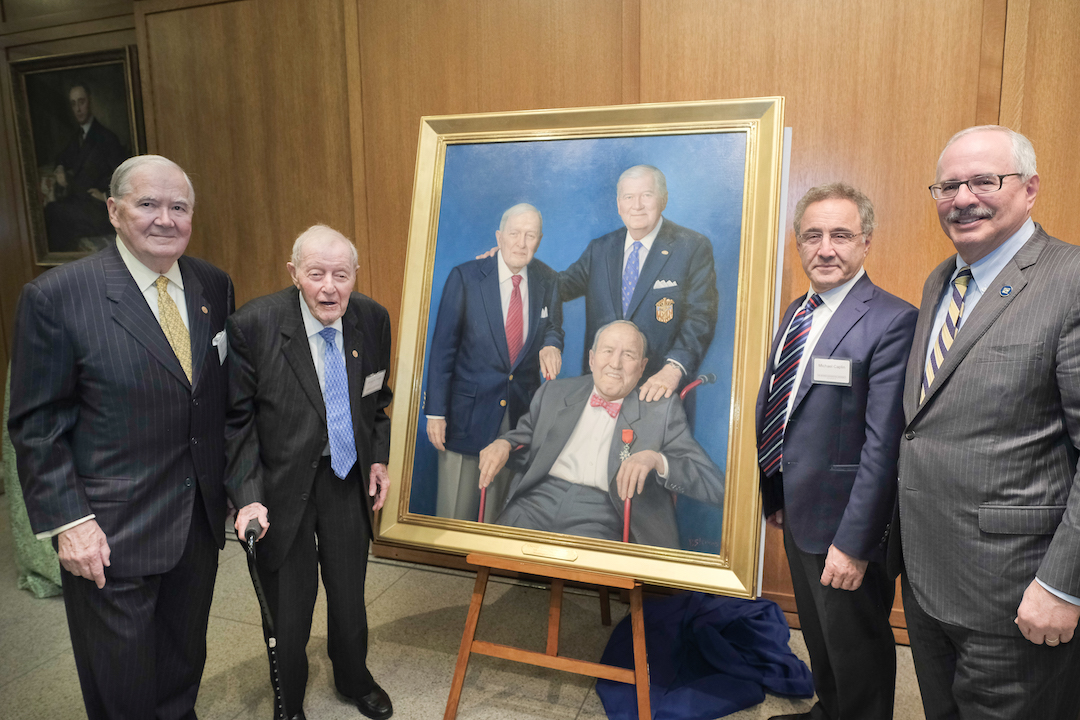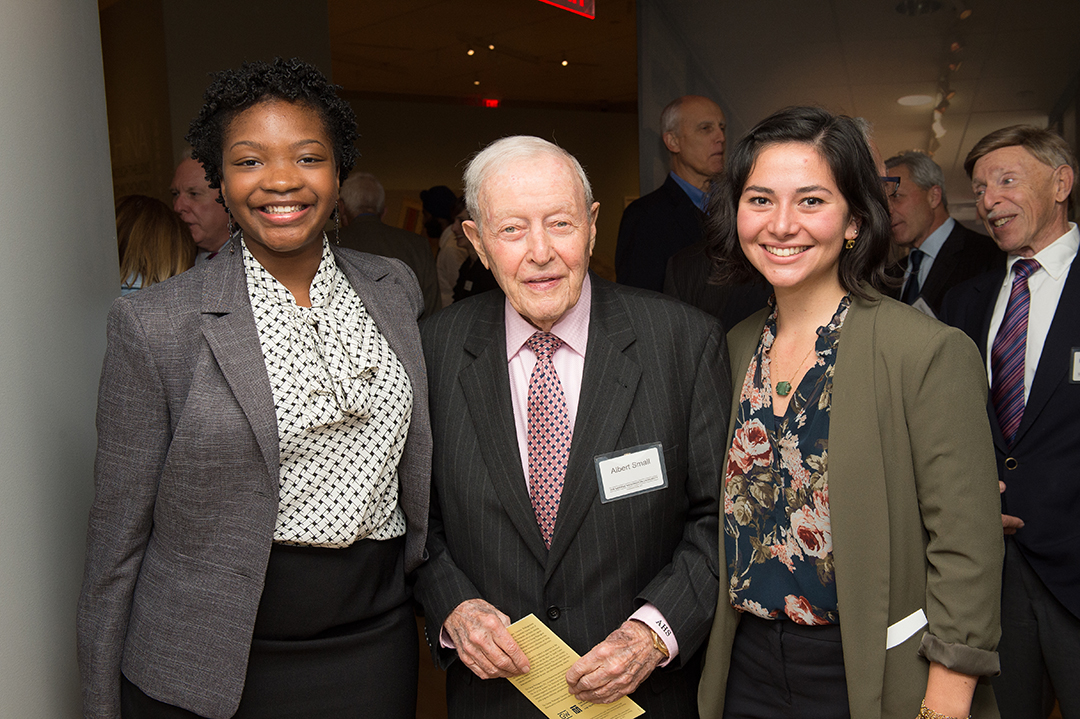By Tatyana Hopkins
Every year since 2011, the Albert H. Small Normandy Institute has sent 15 high school students from across the country and their teachers to Normandy, France, to perform a graveside eulogy for a fallen hero from their hometowns buried in the Normandy American Cemetery. Now, the institute has joined the George Washington University.
The institute’s Project Normandy: Sacrifice for Freedom program began to commemorate soldiers who died during D-Day—the World War II battle where the Allied forces of the United States, Britain, France and Canada attacked German troops on the beaches of Normandy. This year marked the 75th anniversary of the campaign, which gained a victory for the Allies and became a turning point for the war.
The Normandy Institute recently became affiliated with GW’s History Department and was recognized Thursday during the Albert H. Small Symposium. Robert G. Perry, B.S. ’70, institute director, hosted the event, which was also a celebration of Albert H. Small’s 94th birthday.
Student participants in this year’s program shared their experiences at the symposium and thanked Mr. Small, who is a World War II veteran, for his contribution to the preservation of American history. In 2011, Mr. Small donated his Washingtoniana collection—some 60 years in the making—to the university to help establish the George Washington University Museum and The Textile Museum.
The program’s two-week summer trip to Normandy culminates a year-long course that includes readings, lectures and extensive research to write a fallen soldier’s biography. GW history professors Charles Thomas Long, academic director of the Normandy Institute, Denver Brunsman and Eric Arnesen, are involved in teaching the course and host a GW visit that includes a trip to the national monuments. (Although not affiliated with the institute, Dr. Long teaches a parallel course, The Price of Freedom: Normandy, 1944, every spring semester for Columbian College of Arts and Sciences students. The college course also involves a trip to Normandy.)
Liam Kellogg, a junior at Seton High School in Manassas, Va., called the program “lifechanging.” Using primary sources such as war records and draft cards, he pieced together the life story of Army Capt. Richard L. Davidson, the son of a farmer from central Virginia.
“Although he was poor and received only an eighth-grade education, he rose through enlisted ranks and eventually became a company commander in what would soon become the legendary 101st Airborne Division,” said Mr. Kellogg. “Learning about this little-known hero and helping to ensure that his life and sacrifice are not forgotten has been a privilege.”
While researching the life of Army Tech. Sgt. William T. Lemon, Vincent Verrocchio, who is also a junior at Seton, interviewed relatives and a neighbor who grew up two houses away from Mr. Lemon in Northern Virginia’s Loudoun County.
Mr. Verrocchio said while he learned personal details about Mr. Lemon from the interviews, he shared information about his service with his descendants and friends that they did not know.
“This spread of interest and knowledge of our soldiers is what keeps their memory alive in this generation and in generations to come,” Mr. Verrocchio said.
Jayne Zirkle, who attended the School Without Walls in Washington, D.C., said she learned "the price of freedom" while researching the life of Army Pfc. William L. Byers, who made it through "a month and a half of fighting before he perished."
"While at the Normandy American Cemetery, I learned that for many of the men that we had visited that day, our group would be their first visitors," she said. "These men’s stories deserve to be told and their honor deserves to be preserved and celebrated."
In addition to the student presentations, two paintings were unveiled at the event.
One was an aerial view of Normandy’s Utah and Omaha beaches on D-Day by historical artist Peter Waddell. Sand from the beaches were mixed into the paint, and it has a corresponding key to identify each of the ships depicted.
The other was a portrait of Mr. Small, Mr. Perry and Mortimer M. Caplin.
Mr. Caplin, who was a World War II veteran and survivor of the Normandy invasion, shared his story each year with students in the Normandy Institute program. He died at the age of 103 earlier this year.
GW President Thomas LeBlanc said the university, which currently houses the Albert H. Small Washingtoniana Collection and the Albert H. Small Center for National Capital Area Studies, was delighted to welcome the Normandy Institute.
“The Normandy Institute is a vital program that brings history to life and honors the memories of soldiers who were a part of the Normandy invasion,” Dr. LeBlanc said. “It is a tremendous honor that Albert Small and Bob Perry selected GW as the physical home for the Normandy Institute.”




